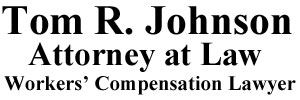The use of surveillance film as a litigation tactic to discredit the veracity of injured workers is oppressive and perpetuates unfair prejudice. Films can be debunked by exposing four widely believed myths. The first myth is that limitations from injuries are constant, affecting everyone the same way. The second myth is that work restrictions are the same as maximum capabilities. The third myth is that injuries and their effects can be accurately self-assessed by the injured worker. The fourth myth is an injured worker’s capabilities can be accurately quantified by filming them secretly. These are all false premises upon which the impeachment value of surveillance film is based.
When injured workers engage in casual conversation with their doctors, or when they are asked to give a statement about their functional abilities, they put themselves at risk for surveillance impeachment and criminal persecution. Most injured workers do not realize the potential scrutiny their words will be subjected to, after the fact, by sophisticated adjusters and their attorneys. Neither do most doctors.
Injured workers can easily misunderstand questions about their abilities. Questions are not always clear, whether they are requesting an estimate of when activity increases symptoms to the point where the injured worker tends to self-limit the activity, or they are really asking the worker to self- assess their maximum capabilities. Agents of the insurance companies and their attorneys illogically presume the answers are valid self- assessments of the injured worker’s maximum capabilities.
When an injured worker’s estimates seem overly restrictive for a literal maximum capacity the worker is then at risk of having their credibility impeached by surveillance film. The adjusters hire investigators who follow the worker around looking to film activity that is inconsistent with the worker’s estimated abilities. When the investigator successfully films activities in contradiction of the misinterpreted statements, the insurance carrier claims the films prove the injured worker is misrepresenting the effects of their injury. So the game goes.
THE FIRST MYTH: LIMITATIONS FROM INJURIES ARE CONSTANT, AND AFFECT EVERYONE THE SAME WAY.
Each injured worker’s injury is different. The severity of the injury varies as well. The worker’s genetic disposition for functioning with its effects is also unique, as are the symptoms they experience. Injured workers can have good days and bad days. Symptoms wax and wane. Pain affects people differently such as how disabling they perceive the pain and how their activity is affected by the pain. Pain can also vary at different times based on numerous variables, including: medication, prior activity versus rest, distraction, and individual psychological factors.
Exaggerated behavior and self assessment may stem from conscious or unconscious psychiatric pathology:
Somatization Disorder can explain variances in presentation of an injured worker, and overly restrictive self assessments. Doctors used to diagnose this type of mental health disorder (sometimes called psychosomatic or somatoform) when people reported physical symptoms that were not explained by a physical disorder. However, it is sometimes difficult for doctors to determine that a person has no physical disorder. Also, it is not usually appropriate to diagnose a person with a mental disorder simply because doctors cannot find a physical cause for the symptoms. Test results could have been wrong, or the wrong tests could have been used. Furthermore, many people may have a physical disorder that contributes to their symptoms, but they react so excessively or inappropriately to it that they are considered to have a mental health disorder. Also, making such a distinction between physical and mental symptoms sometimes makes people think that doctors do not believe their symptoms are real. Because of these problems, doctors now base the diagnosis of somatic symptom disorder on how people respond to their symptoms or health concerns. The main criterion is that people’s preoccupation with their physical symptoms is so strong that it causes significant distress and interferes with daily functioning.
When the perception of a disability is aggravated due to a psychological reason, it is still disabling, at least at a conscious level. However, since this type of limitation is not necessarily a physical limitation it is not surprising that it would be inconsistent with objective testing and also susceptible to contradiction by surveillance.
The myth that limitations are constant and affect people similarly is false.
THE SECOND MYTH: WORK RESTRICTIONS ARE THE SAME AS MAXIMUM CAPABILITIES.
Work restrictions are not equivalent to maximum capabilities. Comparing surveillance films to maximum capability in the abstract could provide contradictory evidence. The logistical problem is that accurate data of maximum capability available is rarely available for comparison. While work restrictions are estimates of risk, capacity and tolerance: those restrictions are unscientific and typically not objective. Further confusing matters is that work restrictions and maximum capabilities are intertwined and equated differently within a third term, disability.
There are many different ways of looking at disability. While it is necessary to discuss work limitations of an injured worker those discussions are often somewhat arbitrary assessments which are misunderstood to be declarations of maximum capabilities. The difference is exemplified by defining work restrictions using the “biopsychosocial” model.
Accurate work restrictions are broken down into risk, capacity and tolerance:
Risk refers to the chance of harm to the patient, coworkers, or to the general public, if the patient engages in specific work activities. Capacity refers to concepts such as strength, flexibility, and endurance. These are measurable with a fair degree of scientific precision when a physician takes the time to do so. Tolerance is a psycho-physiologic concept. It is the ability to tolerate sustained work or activity at a given level. Symptoms such as pain and/or fatigue are what limit the ability to do the task in question. The patient may have the ability to do a certain task but not the ability to do it comfortably. Thus tolerance is not scientifically measurable or verifiable. Tolerance is frequently less than either capacity or current ability. (Emphasis added)
Surveillance film may be useful to assist a treating doctor in fine tuning estimated work capacity but it is misused when it is claimed to be a credible impeachment force. This is because work restrictions are subjective and somewhat arbitrary to begin with. As such, what good is it to compare film with estimates and unknown quantities? If you untangle the myth that work restrictions are not the same as maximum capabilities you reveal the flaws of utilizing surveillance film for impeachment.
THE THIRD MYTH: INJURIES AND THEIR EFFECTS CAN BE ACCURATELY SELF ASSESSED BY THE INJURED WORKER.
Physical capacities are rarely self tested, measured or documented. It makes no sense for someone who is seriously injured to test their maximum capabilities. If the worker has not attempted their limits of a specific activity and documented the result they have no foundation to answer the question. There are functional capacity testing centers where estimates can be ascertained in a controlled environment under medical supervision when this information is needed
In sum, work restrictions are mostly estimated guesses that vary widely among people and doctors. The definitions of risk, capacity, and tolerance are rarely clarified to the injured worker. Therefore, it should be no surprise when injured worker’s answers to undefined questions about their capabilities are contradicted by surveillance film. In fact, it’s predictable. As such surveillance film should have minimal relevance comparing activities filmed in public to the work restrictions or speculated self assessments.
THE FOURTH MYTH: AN INJURED WORKER’S CAPABILITIES CAN BE ACCURATELY QUANTIFIED BY FILMING THEM SECRETLY.
Investigators are not neutral. They are paid agents of an insurance company, striving to create a production that makes the injured worker look uninjured. Surveillance film by its very nature is dissimilar to a clinical setting or deposition where an injured worker is asked to focus on his or her pain. It is not a valid, controlled comparison. Surveillance loses its significance the more remote in time it is taken from the statement. The films produced can be cherry picked or taken only at times the investigators believe an injured worker looks more active and less injured.
Most injuries are not visible to lay people. Pain is subjective and invisible. It also fluctuates. Surveillance film can only capture a reaction or lack of reaction to pain. Medications can mask visual depictions of pain and films cannot show how much medication a worker was taking at the time of the filming? In addition, injured workers adapt to and find ways to live with their pain over time.
When someone is distracted, blocking their pain from their consciousness, or not focusing on their pain, they would logically appear less disabled at such times. It is also natural for an injured worker to continually test their capabilities, especially at times when they are feeling well. The investigator waits for these times to catch the “less injured” depiction on film. It is unfair to compare a potentially distracted glimpse of a “good” time caught on film to an injured worker’s presentation given to their doctor about their symptoms when they are naturally focused on their pain or when they were describing recollections of difficult times.
CONCLUSION
Although surveillance film is frequently utilized as an effective litigation tactic, its effectiveness can be debunked though education and confrontation of the four myths upon which it relies. Contrary to the myths noted above: 1) Pain affects people differently at different times based on numerous fluctuating variables, including: individual genetic disposition, medication, activity, the type and severity of an injury, distraction, and psychological factors; 2) Maximum capabilities are not the same as work restrictions, and comparing films to either is insignificant because they are estimated and uncertain; 3) Injured workers cannot accurately self assess the effects of their injuries on their abilities; 4) Surveillance film is not a neutral product and does not accurately assess work restrictions, disability, pain, maximum capabilities or tolerances. How, when, and what is filmed is decided by paid investigators looking for specific activities.
There is no basis in fact or science for strangers on the street being able to observe pain or injury in most cases. Inconsistencies between answers to poorly defined questions and activities captured by secret surveillance are meaningless to the informed. However, using film for such a comparison creates unfair prejudice when viewed by those that are not educated about the limitations and context of surveillance films. To conclude that someone lacks credibility or is criminally misrepresenting themself based on filmed inconsistencies, without great scrutiny, is a game of smoke and mirrors designed to harm the weakest participant in the worker’s compensation system, the injured worker.





